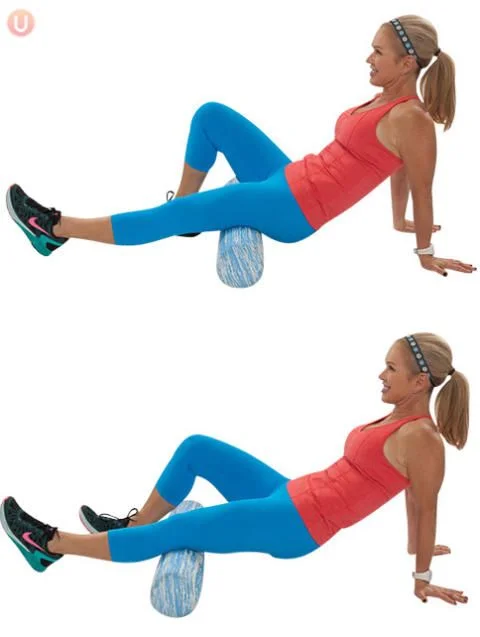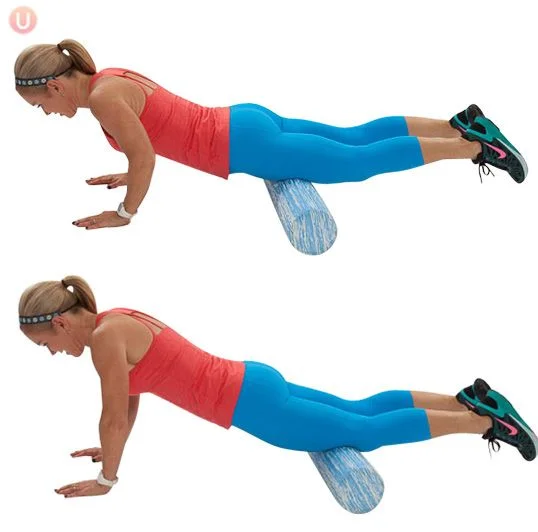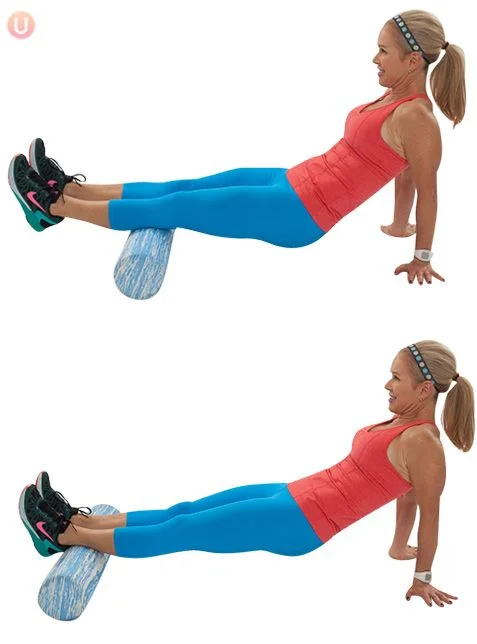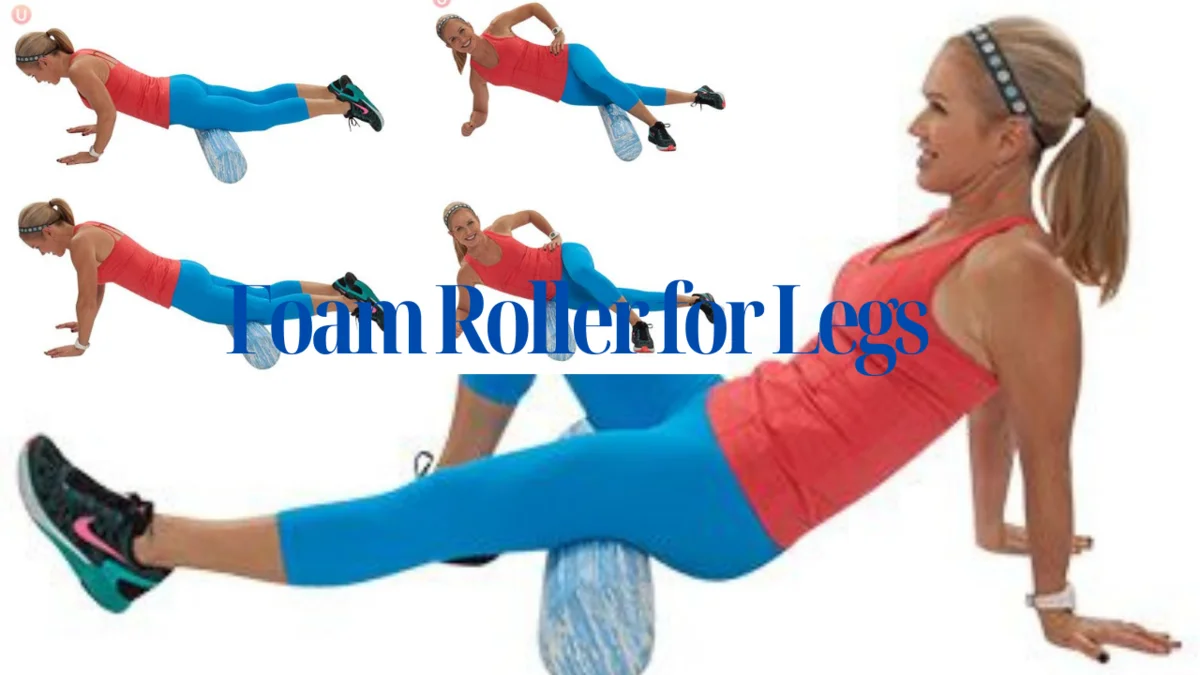Looking for a foam roller for your legs that is perfect for helping to relieve tension in your legs? Look no further – these are the best foam rollers for legs on the market!
Find the right foam roller for leg needs with this guide – from budget picks to those made with special features for alleviating leg tension.
Do you want big, strong legs? If so, then you need to use a foam roller for the leg. Foam rollers are one of the best tools for improving your leg’s strength and flexibility. In this article, we will review some of the best foam rollers on the market and tell you what to look for when buying one.
Even if you don’t lift weights, rolling out your leg with a foam roller for legs is still a great way to exercise them. The foam roller helps improves flexibility, range of motion, and overall muscle strength. They also tend to reduce tension in the muscles, which can aid with discomfort and inflammation. Simply put, a good foam roller for legs can benefit both your leg and mind.
If you are wanting to get better leg strength and versatility then you should invest in a good quality Foam Roller for your Legs. Here are some of the best foams on the market today.
Benefits of Foam Roller for Legs
Reduce muscular pain
Using foam rolls can aid in the relief of muscle soreness and the reduction of inflammation.
A single tiny study Trusted Source discovered evidence that foam rolling after exercise may help lessen delayed-onset muscular soreness in eight male participants. In the study, physically active males foam rolled for 20 minutes immediately following a workout, as well as 24 and 48 hours later.
When compared to exercising without foam rolling, these participants experienced less delayed-onset muscular pain. They also fared better in physical exercises than individuals who did not foam rollers for their legs.
More research in a wider, more diverse population is required to confirm how foam rolling helps muscle pain.
Extend your range of motion.
More research is needed to determine whether foam rolling can assist you enhance your range of motion. Flexibility and performance both benefit from range of motion.
Researchers discovered that a combination of foam rolling and static stretching was most beneficial for enhancing the range of motion in one small trial of 11 adolescent athletes. This was in comparison to just static stretching or foam rolling.
To fully understand the association between using foam rolls and range of motion, more research with a larger, more diverse sample of people is required.
A stretching and massage roller after each session might help you get the most out of your foamy roller.
Reduce the appearance of cellulite temporarily.
Some foam rolling product providers say their goods can help relax and break up your fascia. Fascia are connective structures in the body that contribute to the development of cellulite.
While a foam roller may temporarily smooth your skin, there is no scientific evidence that it may eradicate cellulite permanently.
Maintaining an active lifestyle and eating a healthy diet are the most Serving tool for cellulite reduction.
Reduce back pain
SMR has the potential to be effective. Pain relief from a reputable source. It may also assist to alleviates back pain.
However, when using a foam roller on the back, exercise caution. It’s very easy to strain or hurt your back even more.
Turn the foam roller vertical (in line with your spine) and slowly roll the roller from side to side, remaining in line with your spine, to treat lower back discomfort. Instead of maintaining it horizontally, which can lead you to arch and strain your back, do this.
You can also work out back knots by resting on a foam massage ball or a tennis ball.
Control fibromyalgia symptoms
For the treatment of fibromyalgia symptoms, SMR has demonstrated promising outcomes.
Participants in one studyTrusted Source of 66 persons with fibromyalgia who After 20 weeks of foam moving, participants reported feeling better and experiencing a decline in intensity., exhaustion, stiffness, and depression than those who did not utilize SMR techniques. They also noted an increased range of motion.
While this study is encouraging, more research is needed to validate foam rolling’s efficacy in alleviating fibromyalgia symptoms.
Assist you in relaxing
Many people love using foam rollers. Breaking up muscle tension may make you feel less tense and calmer. However, there is little evidence that using a foam roller helps with relaxing.
Twenty female participants in one short studyTrusted Source either foam rolled or rested for 30 minutes after jogging on the treadmill. The researchers discovered that foam rolling did not significantly reduce stress levels any more than resting did.
More investigation is required. Meanwhile, if you find foam rolling calming, there’s no harm in including it in your weekly regimen.
The Top Foam Roller for Legs Exercises
Exercises using a foam roller for legs are excellent for rolling along your calves, quadriceps, hip flexors, and hamstrings. While the jury is yet out on the benefits of foam rolling, many people appear to benefit from it therapeutically.
Does using a foam roller on your legs support your muscles lengthen? Probably not. No, we don’t believe a foam roller can help loosen tight knots. Is a foam roller good for loosening fascia? Maybe, but we’re not convinced. So, how does it work exactly? Patients tend to gain from rolling over aching muscles, most likely via a neurological feedback loop.
The act of foam rolling feels quite similar to self-massage. This appears to benefit patients. It could be a placebo effect, but some patients do respond extremely well to it.
Several sportspeople describe experiencing “tight” in their legs, particularly in the hamstrings and calves. It feels amazing to roll them over a foam roller for legs. Some athletes use foam rollers to warm up, others to cool down, and yet others as part of their recovery process. DOMS (Muscle ache with delayed onset) is a frequent post-exercise symptom.
Pearcey’s 2015 research paper stated that “Foam rolling effectively reduces DOMS” and “foam rolling significantly improved quadriceps muscle tenderness by a moderate to large amount in the days after fatigue.” However, this study was based on a tiny sample size of only eight persons. The study suggested 20 minutes of foam rolling immediately following the workout and daily thereafter.
1. Gentle ITB Stretch with a Foam Roller
Place a 4-inch (10-cm) foam roller on the floor. Place the roller beneath the side of your leg while lying on the floor. With your arms supporting you, roll the roller up and down the side of your leg from your knee to your hip bone. Lifting your torso with your arms relieves strain on the roller and makes the exercise more gentle. Roll up and down ten times. This activity aids in the flow of a tendinous band on the outside of your thigh.


2. Lying Glute and Piriformis Stretch with a Foam Roller
Place a 4-inch (10-cm) foam roller on the floor. Lie on the roller with the roller under your buttocks. Bring your knees together. Simply lie down and roll the roller back and forth for ten repetitions to stretch the buttock (gluteal) muscle. Your back will naturally arch somewhat. Gradually increase to a 6-inch (15-cm) diameter roller.
3. Hamstring Stretch using a Foam Roller
Sit down and roll a foam roller beneath your hamstrings (the back of your leg). Your feet should be elevated above the floor., and you should be able to balance with your arms. To stretch your Hamstrings, roll the roller up and down ten times. To emphasize the stretch on one side, cross your knee.


4. Quadriceps Foam Roller
Lie face down on the floor, elbows on the floor, and place the roller under your Quadriceps muscles (front of the thighs). Ten times, roll the roller up and down your thighs. By shifting your body weight or crossing your leg, you can concentrate the stretch on one side.
5. Gastrocnemius Soleus Stretch with a Foam Roller
Place a foam roller under your calf muscles (the back of your lower leg) and sit down. Your feet should be off the ground, and you should be able to balance with your arms. To stretch your calves, roll the roller up and down ten times. To emphasize the stretch on one side, cross your leg. Next, point your toes backward towards your knee.

Is foam rolling harmful?
Using foam rolls is generally considered safe if you have muscle tightness or regularly work out. Prevent using foam rollers if you have a serious injury, such as a muscle tear or break, until your doctor or physical therapist has cleared you.
Avoid rolling over tiny joints such as your knees, elbows, and ankles, which can cause hyperextension or injury. Instead, when foam roller for legs, start with your calves and work your way up to your quadriceps, avoiding the knee area.
During pregnancy, foam rolling may help minimize tension. Just make sure your doctor clears you first, and avoid resting on your back to foam roll later in your pregnancy. You should also avoid rolling out your calves during your third trimester. This may result in premature labor. If you are concerned, consult your doctor.
Does foam rolling increase muscle strength?
Foam rolling has no direct effect on muscle strength. It can, however, develop enhance muscle flexibility and range of motion, which can contribute to improved muscle strength indirectly. Muscles that are more flexible can improve with greater power and efficiency. This can lead to better results in strength-training routines. Foam rolling can also assist minimize muscular soreness, making it simpler to sport hard and recover after sessions.
Here is a list of the advantages of foam rolling:
- Muscle flexibility is improved.
- Improves range of mobility
- Muscle soreness is reduced.
- Encourages soft tissue repair
- Enhances athletic performance
Foam rolling can be a beneficial supplement to your training program if you want to build muscle strength. It is crucial to realize, however, that foam rolling alone will not make you stronger. To gain muscular mass, you must continue to focus on strength-training workouts.
Does foam rolling help muscle recovery?
Yes, foam rolling can assist with muscle rehabilitation. Foam rolling is a type of self-myofascial release (SMR), which is a pressure-based technique for releasing tension in the fascia, the thin layer of connective tissue that surrounds muscles and other structures. When the fascia is tight, it can limit movement and create muscle stiffness. Foam rolling can assist to ease muscle tension and increase flexibility and range of motion.
Some scientific evidence supports the application of rolls of foam for muscle recovery. According to a study published in the Journal of Strength and Conditioning Research, foam rolling after exercise reduced muscular soreness and improved the range of motion. Other studies published in the Journal of Athletic Training revealed that foam rolling assisted athletes in recovering from musculoskeletal injuries.
It can be done before or after physical activity. It can help to warm up your muscles and improve your range that moves if done before the activity. It can assist to speed up healing and lessen muscular soreness if done after a workout.
To foam roll, place the muscle you want to target immediately on top of the foam roller. Roll the muscle back and forth, exerting pressure until you feel a stretch or tightness. Hold the stretch for 30 to 1 minute before moving on to the next muscle.
How to Select a Foam Roller?
A foam roller is often formed like a cylinder and made of dense foam. Foam rollers, on the other hand, come in a variety of sizes and shapes, as well as stiffness levels.
It may take some trial and error to locate the best foam roller for you. Before you buy, try out different foam rollers to discover one that is comfortable for you to apply.
Here are some of the several varieties of foam rollers that are available online:
- Smooth rollers are distinguished by their smooth, dense foam surface. They are ideal for folks who are new to foam rolling. They provide even texture and are less harsh than textured rollers. This option is also less expensive.
- Textured rollers feature ridges and knobs. They are used to go deeper into muscles and release knots and stress.
- Foam-covered massage sticks can be used to deeply massage your leg or upper back.
- Foam massage balls can be used to massage specific muscle groups. For example, to work out shoulder knots.
When selecting a foam roller, you should also consider its shape and size. For smaller areas, such as the arms and calves, a shorter roller is more effective. If you intend to travel with your roller, shorter rollers are also more portable.
Summary
To get the most out of Foam Roller for legs exercise, you should start with gentle stretches followed by tougher ones.
For ITB and glute stretch, apply a foam roller to provide gentle pressure and help loosen up those muscles.
One of the most effective leg stretches is to place the foam roller on your heel and stretch upward toward your hip.
For quadriceps foam rolling, place the foam roller on top of your kneecap and push down into it, then slowly pull your knee towards your chest.
Frequently asked questions
are foam rollers good for your legs?
how do you properly roll your legs?
Toe roll: Lie on your back and extend your legs straight up in the air. Roll your toes towards your shins slowly, then return to the beginning position. Repeat 10-15 times more.
Calf roll: Lie down on the ground with your legs straight out in front of you. Place a towel rolled up underneath each calf. Apply pressure to the towels with your hands while rolling your calves back and forth. Cycle 10-15 more times..
Hamstring roll: Lie on your back with your calves bent at the knees and your feet flat on the ground. Place a rolled-up towel underneath each hamstring. Use your hands to apply pressure to the towels and roll The muscles in your hamstrings up and down. Repeat 10-15 times.
Ankle roll: Sit on the ground with your legs extended straight in front of you. Hold one foot in each hand and rotate your ankles in circles, first clockwise and then counterclockwise. Repeat 10-15 times for each foot.
can foam rolling reduce cellulite?
Can foam roller slim leg?
Latest posts
Exercise Lower Cholesterol: 7 Best Practices for Quick Results
Healthy High-Carb Foods: 8 Best Options for Energy Boost
Discover the best healthy high-carb foods that are both tasty and nutritious. Explore our top…
Foods to Avoid Migraines: 7 Proven Dietary Changes Needed
Foods to avoid migraines may be severe, interfering with everyday activities and productivity. While several…
Screen Headaches: 5 Steps to Prevent Digital Strain
Screen headaches have become increasingly common in the digital age, as we spend more time…
Block DHT: 6 Lifestyle Changes to Prevent Hair Thinning
Find out about 6 lifestyle modifications that effectively block DHT and stop hair loss. Find…
Hashimoto’s: Review, Foods, Vitamins, and Recommendations
Discover the optimal diet for managing Hashimoto’s disease. This comprehensive guide reviews essential foods, vitamins,…
Vicks Vaporub for health: Uses and Effectiveness Explained
Vicks VapoRub may help relieve cough and soothe sore muscles. Some anecdotal uses include relieving headaches,…
Vitamin E Fruits: Best 10 Sources for Health
Are you looking to boost vitamin E intake for better health and well-being? One of…
Chamomile Tea: 8 Amazing Health Benefits You Need
Chamomile tea is a popular herbal remedy known for its calming and soothing properties. But…
Daily Harvest: 8 Reasons to Try It Today
Are you looking for a convenient and nutritious way to fuel your body with delicious…
Sarsaparilla Tea Benefits: 10 Amazing Health Advantages
Discover the incredible sarsaparilla tea benefits with this comprehensive guide. From improving skin health to…
Sea Moss Benefits: Discover 7 Powerful Health Advantages
Have you heard about the amazing benefits of sea moss? This nutrient-rich seaweed has been…
Shrimp Tempura Secrets: 10 Tips for Success
Have you ever tried making shrimp tempura at home, only to have it turn out…
Keto Bread Crumbs: 7 Easy Homemade Variations
Are you following a keto diet and missing the satisfying keto bread crumbs in your…
Potato Starch: 3 Amazing Health Benefits Unveiled
Did you know that potato starch is not only a versatile ingredient in cooking, but…
Watercress Wonders: 7 Surprising Benefits You Must Know
Have you ever wondered about the extraordinary capabilities of the humble watercress? This vibrant green…
Teething Woes: 8 Essential Tips for Soothing Babies
Teething can be a challenging time for both babies and parents. As your little one’s…
Best 8 Foods That Help You Sleep
If you want to improve your sleep quality, paying attention to what you eat before…
Remove Skin Tags at Home: 5 Safe and Quick Solutions
Have you been struggling with unsightly skin tags that won’t seem to go away? Skin…
How To Eat Crawfish the Right Way: 5 Simple Steps
Learn how to eat Crawfish like a pro with this easy-to-follow guide. Get ready to…
Diet Coke Glass Bottles: Discover benefits & side effects
Are you a fan of Diet Coke and love collecting vintage items? If so, you…
Does Zinc Help with Weight Loss? The Surprising Truth
Does zinc help with weight loss? Find out how incorporating this important nutrient into your…
Ruckpack Energy Drink: Revitalize Your Day, Every Day
Are you tired of feeling drained and exhausted by midday? Do you find yourself reaching…
Discover What Are The Two Types Of Carbohydrates?
Wondering what are the two types of carbohydrates? This guide breaks down simple and complex…





